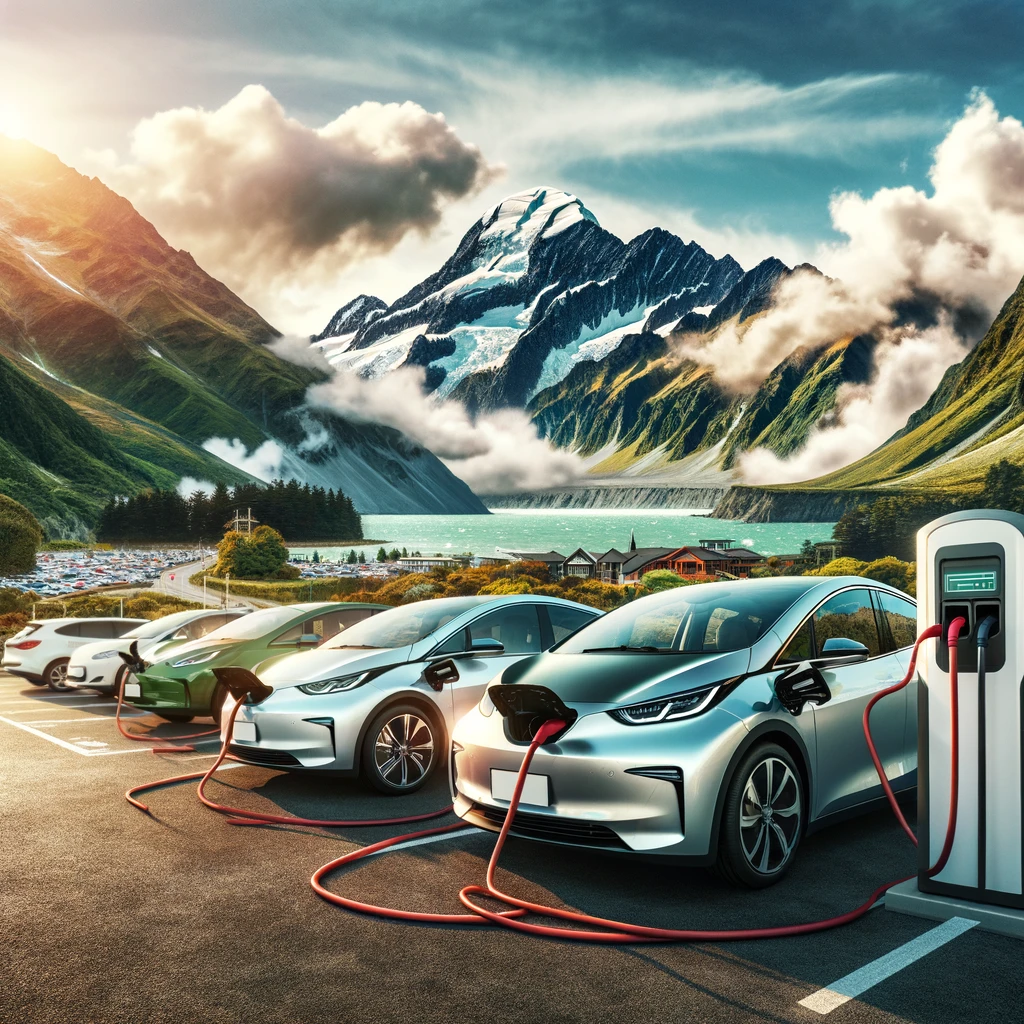Greenhouse Gas Emissions in New Zealand: A Positive Trend
It’s fantastic to see that greenhouse gas emissions in Aotearoa New Zealand fell for a third consecutive year in 2022. Gross annual emissions at 78.4 million tonnes CO2-equivalent were at the lowest level in the 21st century.
Official figures lag quite a long way behind. But it’s clear we are starting to see emissions reductions from a few areas kicking in. Wind and solar in New Zealand currently make up about 7% of electricity generation, a big increase in recent years, and we are yet to see all the new capacity, such as Lodestone’s solar farms, coming online.
The Rise and Impact of Electric Vehicles
Electric vehicles are starting to figure in the transport mix too, with the Clean Car Discount leading to a rapid increase in sales of both new and used EVs and hybrid vehicles. Since the Clean Car Discount was repealed in late 2023, sales of cleaner vehicles have plummeted, but the initiative has kickstarted the EV supply chain in New Zealand at long last, and every trip made in an EV is one less made in a fossil fuel vehicle.
These are certainly positive points. New Zealand is bending the emissions curve. Australia, interestingly, is not – emissions savings from cleaner energy sources are essentially being matched by increases in emissions from heavy industry, transport, and agriculture.
The Need for Accelerated Climate Action
Whether you are looking at Australia, New Zealand, or elsewhere, it’s apparent we need to do a lot more, quickly. Rapid deployment of now well-established technologies like wind, solar, and electrified transport is necessary, but will not of itself suffice if we are to have any chance of keeping the planet within 1.5 degrees of warming.
So, it’s very good to see a growing cohort of clean tech innovators in Aotearoa and Australia taking on some of the toughest emissions challenges on the planet. These are the people setting the scene for the next generation of emissions reductions.
Many of these folk are working in so-called “hard to abate” emissions areas, which have proved largely resistant so far. Examples include steel, concrete, chemicals, plastics, process heat (for manufacturing), shipping, and aviation. Another key challenge is New Zealand’s largest emissions source – methane from ruminant livestock.
Addressing Investment Imbalances in Climate Tech
Most people reading this would agree that climate response needs more investment in total. But what’s interesting to observe is that climate tech investment is not flowing evenly into all parts of the market. This is something we can work to fix… and represents an opportunity.
Data from Bloomberg shows transport and toa lesser extent energy are getting more than their share of climate tech funding. In 2023, these two categories secured almost 80% of climate tech funding, while accounting for around 55% of global emissions. By contrast, industry, agriculture, and the built environment are getting less than their share, around 17% of total climate tech investment even though they account for around 45% of emissions. These figures bounce around a bit from year to year, but industrial processes have been consistently under-funded. According to research firm CTVC, over the 4-year period from 2020 to 2023, transport received 2.7 times its share of funding compared with its share of emissions, while industry received 0.5 times.
Opportunities for Investors in Underfunded Sectors
If global climate investors are putting more of their money into transport (especially) and energy, doesn’t that create a big opportunity for those looking at other areas of emissions reduction?
It does, and our investments so far target major industries whose emissions are large, challenging to reduce, and are not necessarily being targeted by others. We look for genuine novelty which can be scaled and protected.
With the data from Bloomberg and CTVC in mind, it’s interesting to observe that companies like Liquium, Zincovery, Hot Lime Labs, and NovoLabs are in the categories which are not receiving their share of global climate investment. Yet they target huge and essential markets, where emissions reductions are urgently needed, such as:
- Fertiliser, and potentially shipping (Liquium)
- Zinc/steel (Zincovery)
- Horticultural produce (Hot Lime Labs)
- Clean water (NovoLabs)
The Future of Emissions Reduction
We think areas like industry, the built environment, and agri-tech are great places to be looking for the next major sources of emissions reduction. The solutions in these areas may be a little smaller in scale and need to be very specific to the problem they are trying to solve.
As our partner Dr. Jez Weston said recently, “maybe in New Zealand, we’d be better off not aiming for a gigacorn [a company which saves 1 billion tonnes of emissions per annum] but for 10 companies that can save 100 million tonnes per year, or 100 companies that can save 10 million tonnes per year”.
We need to decarbonise every product and every service, to deliver a truly low-emissions future for the planet and ourselves. Investing for this sort of specific impact really works. It’s going to drive the next generation of emissions reduction, and as the businesses involved grow and prosper, their investors stand to benefit.
Join Us in Our Mission
That’s the approach we are taking, and we’re extending this approach to our second Climate Fund, known as the Climate VC Fund Extension or CVCFe.
If you would like further information on CVCFe, please get in touch.

Rohan MacMahon is a Partner and Co-founder of the Climate Venture Capital Fund.
Rohan leads Investor Relations for the Fund and brings over 25 years’ executive, consulting and analyst experience, including leading large climate-change and infrastructure projects.
Rohan was formerly a Ministerial Advisor on technology and digital policy and is currently the Chair of Lifewise Trust.



